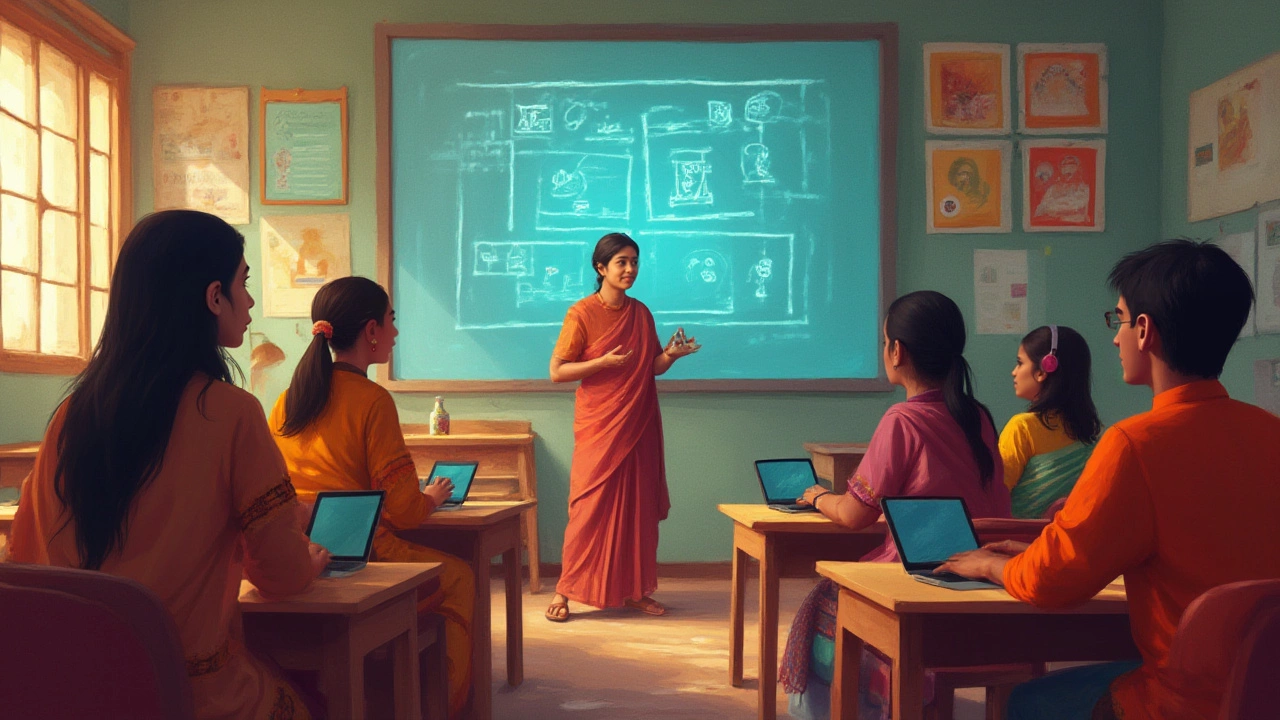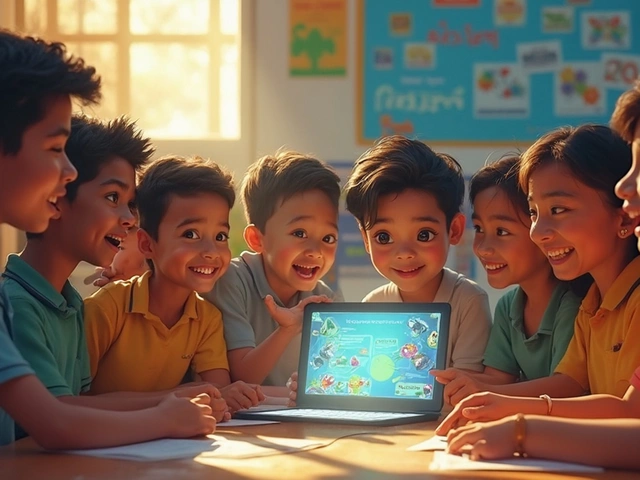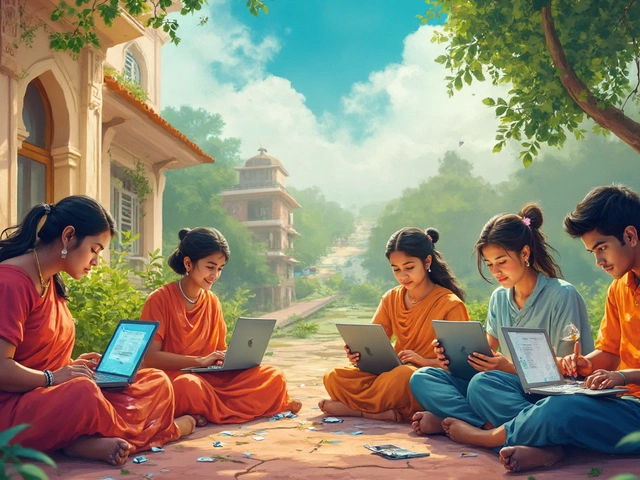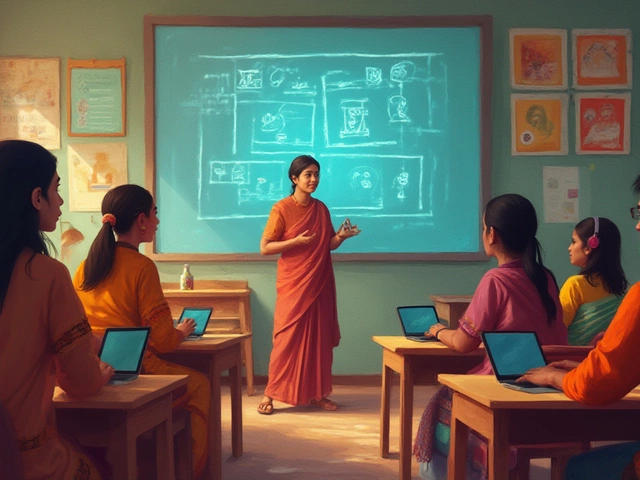Imagine thinking you know what "learning online" means, only to find out there are two roads: virtual learning and eLearning. Most people use the terms like they're twins, but they're more like cousins who barely visit. Have you ever sat in an online class and thought, “Is this what eLearning means, or is it something else?” Trust me, you’re not alone if these terms leave you scratching your head. Let’s shake up those definitions and dig into what really separates virtual learning from eLearning. It’s not just a techie debate—a lot rides on which method you choose, from your daily routine to how much you actually remember. And that’s something way too few people talk about.
Understanding Virtual Learning and eLearning: Two Paths, One Goal?
Virtual learning and eLearning both live in the online education world, but their DNA is different. Virtual learning is like moving your real classroom online. Think about logging in at 10 a.m. for a live science class where you see your teacher and classmates, you raise your digital hand to ask questions, and maybe even groan at bad jokes over Zoom. It’s all about real people meeting in real time, just not in the same building.
On the other hand, eLearning usually means pre-made courses you take at your own pace. No set times, no live meetings. Imagine a platform where you watch videos, read lessons, and do quizzes anytime—while waiting for your train, late at night, or in your pajamas on a Sunday morning. eLearning is all about personal freedom and flexibility. Coursera, Udemy, and edX built their empires on this style. According to a 2023 UNESCO report, over 76% of Indian students participated in some form of eLearning during the pandemic, but only 33% joined scheduled virtual classes.
Here’s where people get tripped up: all virtual learning is eLearning, but not all eLearning is virtual learning. Virtual learning is like a square, and eLearning is like a rectangle—it’s the larger box. Virtual stuff needs you to show up at a specific time, just as you would for a real classroom. eLearning gives you a digital key, and you open the classroom whenever you want.
Another big distinction? Interaction. Virtual learning leans heavily on real-time interaction. You get to ask and answer instantly, do group discussions, get direct feedback, and maybe form WhatsApp groups with classmates. eLearning can offer discussion forums or Q&A, but there’s no real urgency—if you post a question, you might get an answer hours (or days) later.
Teachers and students report this makes a massive difference in how connected they feel. The World Economic Forum highlighted in 2024 that live virtual classrooms helped students feel less isolated, while pure eLearning models often led to "content fatigue"—staring at videos with no one to talk to.
If you’re a teacher, trainer, or student, knowing the difference isn’t academic—it changes how you structure your time. Need personal feedback and accountability? Virtual learning is your best bet. Want to learn independently and skip the schedule? eLearning is the answer.
Key Facts, Features, and Surprises About Virtual Learning
Now let’s pull off the covers and see what makes virtual learning tick. The most obvious feature is that everything happens live. You’ll find yourself logging into scheduled classes or meetings—just online instead of on campus. According to a study by the National Institute of Open Schooling (NIOS), 68% of Indian teachers said virtual classrooms made it easier to cover difficult topics, as students could ask for instant clarification or rewind recordings later if allowed.
Think about tools like Microsoft Teams, Google Meet, or Zoom. These platforms brought virtual learning from a tech-geek fantasy to everyone’s daily grind in less than a year. When the pandemic hit in 2020, many schools in India (and worldwide) went from zero to hero on Zoom practically overnight. The market for virtual classroom tech exploded: by 2024, the global virtual classroom market was estimated at $21 billion according to Statista.
Virtual learning does its best work where personal presence, peer-to-peer talk, and real-time activities matter. Imagine learning a new language—would you rather practice speaking in a live video class or watch tutorials alone? Studies from British Council’s India division showed that learners attending live virtual sessions advanced speaking skills nearly twice as fast as pure eLearning video-only users.
Another fun side-effect: virtual learning can actually improve attendance...but only with the right motivation. When universities in Delhi shifted exams online, attendance in virtual lectures shot up to 84%, compared to the old average of 62% in offline classes, according to Delhi University’s own data. Why? The fear of missing out when there’s nowhere else to go. But the same setup can turn into a nightmare if the tech fails, distractions creep in, or students “ghost” with their webcams turned off.
Now, here’s something not everyone realizes. Virtual learning only works if you’ve got stable internet, a decent device, and a good place to study. In rural parts of India, or even smaller cities, students sometimes miss out simply because of dropped calls, power cuts, or sharing one phone with a sibling. Tech support makes or breaks the experience.
One extra tip: if you’re looking to make the most of virtual learning, don’t rely only on the main class. Form your own WhatsApp group for your class. Ask your teacher to record the session (if allowed) so you can re-watch tricky bits. And don’t be shy about turning your camera on for at least some of the session—people remember faces much more than names.
But what about loneliness? A lot of parents worry their kids miss out on “the school feeling” with virtual learning. This is where virtual platforms try to fight back, building breakout rooms for group work, polling for quizzes, and games to break up the screen time. Still, many educators warn—live doesn’t mean deeply engaged. Distractions are just a phone tap away.
"Technology can amplify great teaching—but it cannot replace it entirely. The human connection is still at the core of effective learning." — Satya Nadella, CEO of Microsoft

Unpacking eLearning: Freedom, Flexibility, and a Few Catches
Switch gears to eLearning now—the side of the digital education coin built on anytime, anywhere access. This isn’t about being present at a set time; it’s about completing things when and how you want. Some eLearning courses are so flexible they don’t check if you show up at all, as long as you score enough on the assessments at the end.
Let’s take an example: You're learning Python on an app like Codecademy. No one cares if you log in at 2 a.m. or 2 p.m.—you’re on your personal schedule. eLearning content includes videos, animated lessons, quizzes, and even AI-powered interactive labs. Massive Open Online Courses (MOOCs) like Coursera and edX have handed out more than 150 million certificates worldwide by the end of 2024—clearly, eLearning is massive, and only getting bigger.
The reason for its popularity? Flexibility. You’re a working professional? You can upskill without quitting your job. Parent with two kids? Study after they’ve gone to bed. The design is all about fitting education around your life, not the other way around. The All India Council for Technical Education (AICTE) reported in 2024 that roughly 2 in 5 skill courses enrolled by working adults used an asynchronous eLearning model.
Still, eLearning is not all sunshine. Without a fixed schedule, motivation can drop off a cliff. Researchers from the Indian Institute of Technology, Bombay found that only 18% of self-paced online learners actually completed their paid course. The culprit? Procrastination, competing life priorities, and the lack of external support. eLearning places all the responsibility in your hands. If you thrive on routine or need the nudge of deadlines, that’s a real challenge.
Another issue? Interaction is usually minimal. Some courses have online forums, but replies don’t come instantly, and group projects lose their spark. AI chatbots are helping in answering common questions, but there’s no substitute for a real teacher’s encouragement or feedback.
If you’re considering eLearning, my advice: go for platforms that blend in some live elements—office hour sessions, live feedback from tutors, or at least mentorship calls. And be honest about your learning style. If you’re disciplined, eLearning can get you ahead faster (and cheaper) than most campus classes. But don’t underestimate distraction—apps, notifications, and the temptation to “do it later” can crush your best intentions.
Earning your certificate or new skill badge feels great. Employers in India and globally are starting to respect eLearning credentials more, especially if they’re from recognized names like Google, Microsoft, or top universities. Yet, for some roles—think nursing, medicine, or anything hands-on—pure eLearning just can’t replace physical or at least virtual supervised practice.
Want to make eLearning stick? Try chunking your lessons into 20-30 minute blocks. Schedule specific times each week to learn—commit to it like you would to a workout. And find a “study buddy” online if your platform has community features—it’s easier to stay motivated when someone’s watching your progress.
Choosing What’s Right for You—and Why It Matters Now More Than Ever
Here’s the million-rupee question: which one should you pick? The answer depends on your life, your learning style, and your goals.
If you crave real-time explanations, live feedback, or a classroom vibe, look for virtual learning programs. This setup works especially well for younger students, language learners, or anyone who benefits from a tight community. It's perfect if your internet is reliable, you have a quiet spot at home (or work), and you like having a set routine. Some of the best coaching for IIT JEE, NEET, and major competitive exams in India now use virtual platforms so teachers can spot your mistakes as you make them—something traditional eLearning can’t offer.
But maybe your life is packed, your schedule is unpredictable, or you’re super self-motivated. Then pure eLearning has some gold hidden in it: modules you can tackle anytime, anywhere, often for less money than live classes. Think about all those upskilling courses, crash courses in digital marketing, or learning to code through mobile apps. This is the playground for working adults, busy parents, or students juggling internships and exams.
Just remember, both paths have their traps. Virtual learning can drain you if sessions are long and repetitive, or leave you frustrated if the teacher isn’t engaging. eLearning can feel lonely or overwhelming, particularly if you lose steam after a few modules. The best programs often blend a bit of both: live virtual check-ins mixed with flexible self-paced assignments. This is called a “blended learning” or “hybrid” approach, and it’s gaining traction everywhere from Delhi’s top colleges to small-town coaching centers.
Before you sign up for any course, check how they deliver content. Ask for a free trial if possible. Check the reviews—and don’t just go by star ratings. Look for honest feedback about teacher quality, content design, and student support. If you need a certificate for a job or immigration, make sure it's from a recognized provider.
And don’t forget the tech basics: whatever path you pick, reliable internet and a distraction-free setup are your best friends. Set reminders, keep a notepad handy for questions, and celebrate every milestone—small wins add up fast in online learning.
So, are virtual and eLearning the same? Not by a long shot. The differences matter. Make your choice based on what fits your life now—not just what sounds impressive on a brochure. You’re in charge—unlock the learning style that actually works for you.



